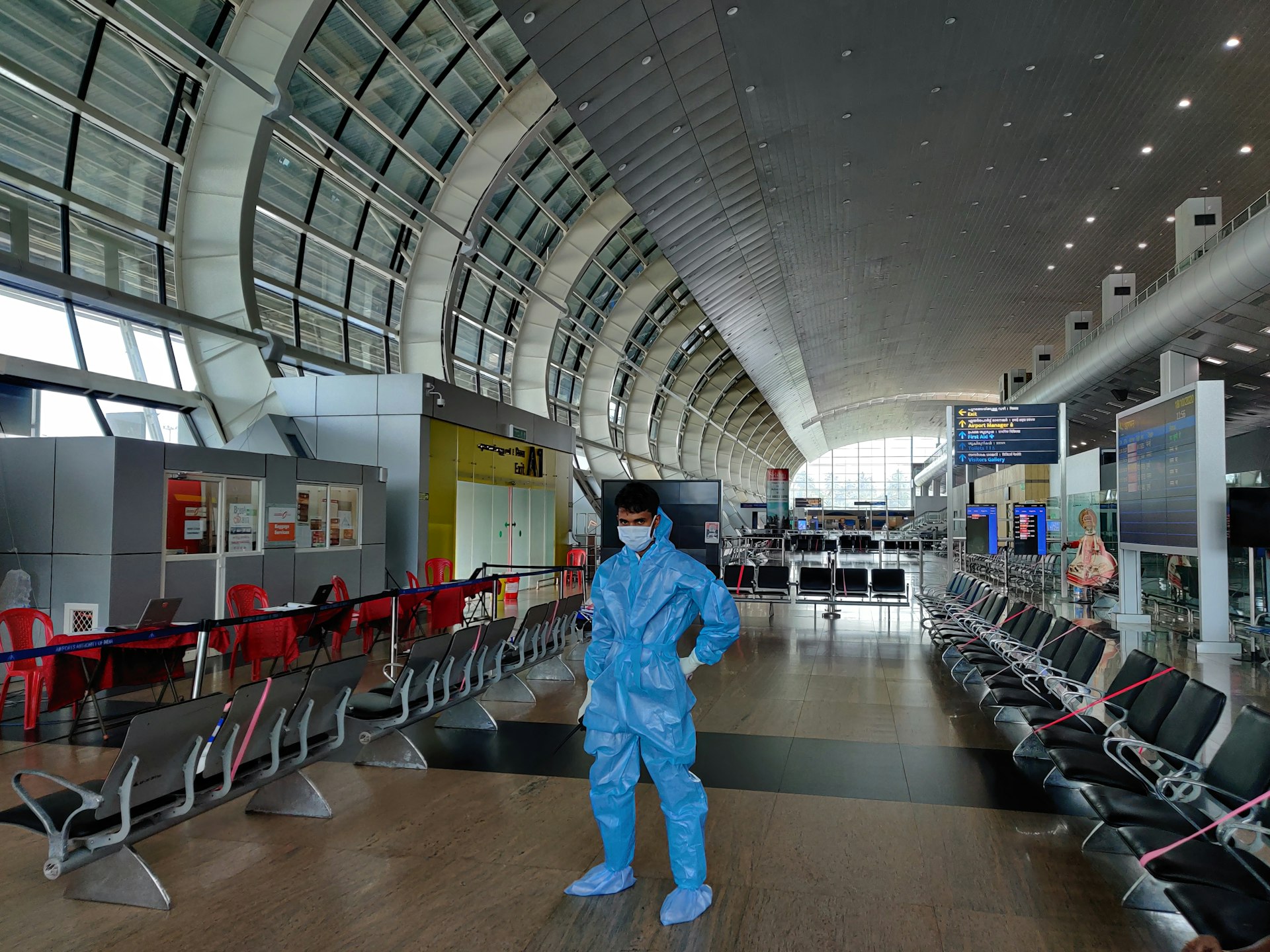Why Robust Autonomous Vehicle Regulation Frameworks Are Essential for Safe Innovation

Photo by Damir Babacic on Unsplash
Introduction
Autonomous vehicles (AVs) have the potential to dramatically reshape transportation, improve road safety, and create new economic opportunities. However, realizing these benefits depends on the development and implementation of effective regulatory frameworks. These frameworks are essential to guide the safe deployment of AV technology, address complex ethical and legal challenges, and build public trust. This article examines why robust regulation is critical, explores current frameworks in the U.S., and offers actionable steps for stakeholders and policymakers.
The Role of Regulation in Autonomous Vehicle Development
Regulatory frameworks for AVs serve as the foundation for safe development, deployment, and public acceptance. They address crucial areas such as safety standards, liability, data privacy, and ethical considerations, ensuring that new technologies are introduced responsibly and transparently [1] . Regulations help clarify expectations for manufacturers, guide testing protocols, and protect consumers from unforeseen risks.
For example, the National Highway Traffic Safety Administration (NHTSA) has issued guidance on Automated Driving Systems, outlining performance-oriented approaches and metrics to accommodate the flexibility needed for AV design [5] . These evolving standards are critical for fostering innovation while prioritizing public safety.
Why Effective Frameworks Matter: Key Benefits
1. Ensuring Safety and Reducing Accidents
Human error is responsible for the vast majority of roadway accidents. AV technology could substantially reduce fatalities and injuries, but only if it is deployed with rigorous safety oversight [2] . Regulatory frameworks require AVs to meet defined safety standards before they can operate on public roads, helping to prevent dangerous failures and instill public confidence.
2. Promoting Innovation and Economic Growth
Outdated or inconsistent regulations can slow the adoption of AVs and stifle innovation. A modern, adaptive regulatory environment allows manufacturers and developers to test, iterate, and scale new technologies safely [2] . The “AMERICA DRIVES” Act is an example of federal legislation aimed at eliminating regulatory barriers and supporting ongoing adaptation as the technology evolves.
3. Addressing Liability and Data Privacy
Clear frameworks help define who is responsible when an AV is involved in an incident, protecting both consumers and businesses. Regulations also set requirements for how AVs collect, use, and share data, ensuring privacy protections are in place [1] .
4. Building Trust and Public Confidence
Transparent, enforceable standards reassure the public that AVs are safe and reliable. This is key to widespread adoption and realizing the economic and social benefits of the technology [4] .
Current Landscape: U.S. Regulatory Frameworks
Regulation of AVs in the United States is a shared responsibility between federal and state governments. The federal government, through agencies like the Department of Transportation and NHTSA, sets nationwide safety standards and vehicle performance requirements. However, in the absence of comprehensive federal legislation, states have developed their own policies, leading to a “patchwork” of rules across the country [5] .
States like Nevada and Michigan have established detailed requirements for AV operation and testing, including mandates for fail-safe behavior and minimum miles driven before public deployment. Massachusetts has created cross-disciplinary working groups to oversee AV integration and ensure public safety. While these state-level efforts are essential, the lack of unified national standards can create obstacles for companies operating across multiple jurisdictions [3] .
Challenges in Regulatory Implementation
The rapid pace of AV technology development makes it difficult for regulations to keep up. Existing standards, such as the Federal Motor Vehicle Safety Standards (FMVSS), were designed for human-driven vehicles and may not adequately address autonomous features [4] . Updating these standards is a complex, ongoing process that requires input from industry experts, policymakers, and the public.
Another challenge is balancing the need for safety with the flexibility required for innovation. Overly prescriptive rules can hinder progress, while insufficient oversight risks public safety and trust. International coordination is also necessary, as AVs will eventually cross borders and require harmonized standards for global deployment [3] .
Practical Steps for Policymakers and Stakeholders
If you are a policymaker, industry participant, or advocate seeking to support effective AV regulation, consider the following steps:

Photo by NK Lee on Unsplash
- Engage with federal and state agencies to stay informed about upcoming regulatory changes. Agencies like the NHTSA regularly publish updates and opportunities for public comment on their official websites.
- Collaborate with cross-disciplinary working groups or associations, such as the Autonomous Vehicle Industry Association (AVIA), to contribute expertise and advocate for industry best practices. To connect with AVIA, you can email them at info[@]theAVindustry[dot]org as recommended on their policy page [3] .
- Participate in pilot projects or public-private partnerships that test AVs under regulatory oversight. Many states require companies to register test vehicles and comply with local safety and reporting rules.
- Monitor legislative developments such as the “AMERICA DRIVES” Act or the American Vehicle Competitiveness Act, both of which aim to modernize federal AV policy [2] [4] .
- Stay informed about international standards from organizations like the United Nations Economic Commission for Europe (UNECE), which influence global AV policy [3] .
For the latest regulatory guidance or to participate in policy development, you can search the official websites of the U.S. Department of Transportation or your state’s Department of Motor Vehicles. Searching for terms like “autonomous vehicle pilot program” or “AV regulatory framework” will yield the most current resources.
Case Studies and Real-World Examples
Several states have implemented unique regulatory approaches. For example, Nevada requires AVs to achieve a “minimal risk condition” in case of system failure, which means the vehicle must be able to bring itself to a safe stop without human intervention [5] . Michigan’s SAVE project mandates that manufacturers accumulate significant mileage in AV operation before launching ride-sharing services, ensuring a proven safety record.
At the federal level, the NHTSA’s Advance Notice of Proposed Rulemaking (ANPRM) seeks public input on how to design flexible, performance-based safety standards for AVs. This inclusive approach encourages innovation while gathering insights from diverse stakeholders [5] .
Alternative Approaches and Future Directions
Some experts suggest adopting performance-based standards rather than prescriptive rules, allowing manufacturers to meet safety goals through a variety of technical solutions. Others advocate for international harmonization of safety metrics to facilitate cross-border AV operation and trade [3] .
Ongoing dialogue among regulators, industry, and the public is necessary to adapt frameworks as technology evolves. Policymakers are encouraged to create mechanisms for regular review and updates, ensuring that regulations remain effective and relevant.
Summary and Key Takeaways
Strong, adaptive regulatory frameworks are vital for the safe and successful integration of autonomous vehicles into society. They protect the public, foster innovation, clarify legal responsibilities, and help the U.S. maintain leadership in transportation technology. Stakeholders should remain proactive, seek collaboration, and leverage both federal and state resources to participate in shaping smarter, safer mobility for all.
References
- [1] Fiveable (2023). Regulatory frameworks for autonomous vehicles: safety, liability, and compliance guidance.
- [2] R Street Institute (2024). AMERICA DRIVES Act: Need for a national AV policy framework.
- [3] AV Industry Association (2025). Policy resources and recommendations for AV deployment.
- [4] CSIS (2024). Barriers to large-scale AV development and the need for updated federal standards.
- [5] Mcity, University of Michigan (2023). Current U.S. regulation of connected and automated vehicles.
MORE FROM ismath.net













